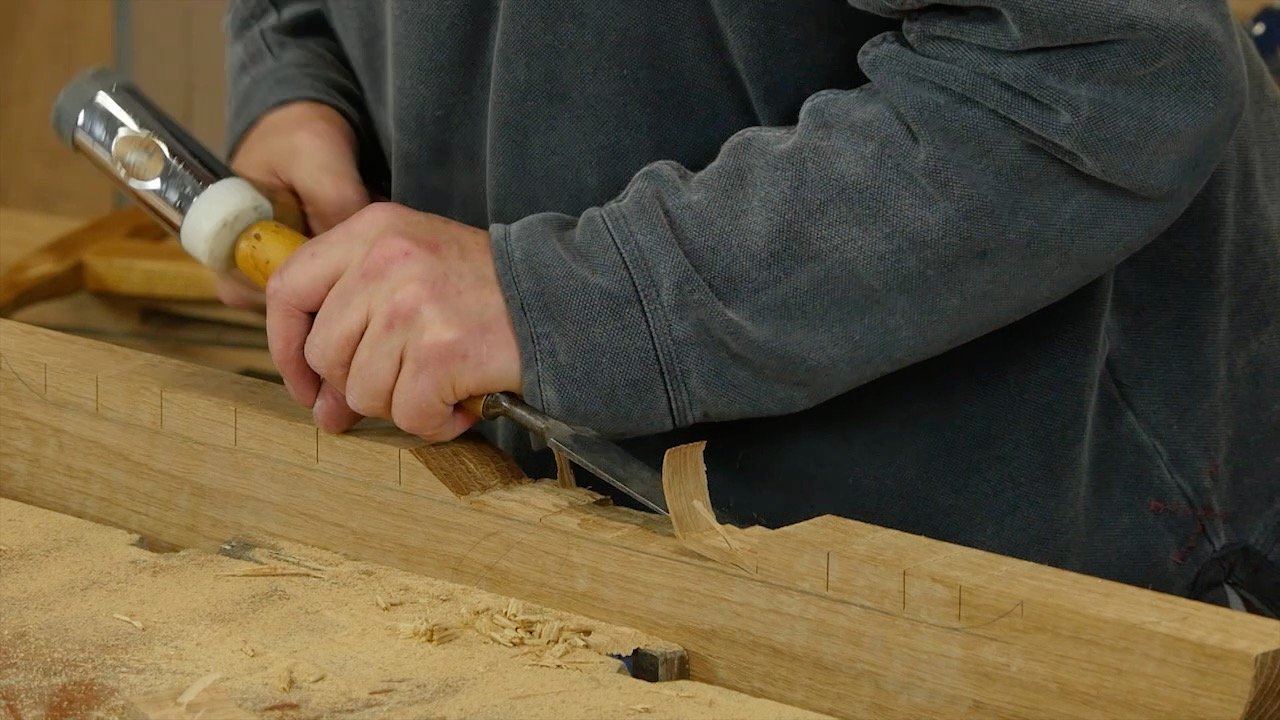Trestle Table – Episode 6
Posted 3 June 2015
This is an episode in a paid series. Want to watch it? You just need to sign up as a paid member, and you can enjoy this video and many other videos we think you will love.
With the end frames together, it’s time to lay out the mortices for the stretcher and shape the feet and side columns. The shaping is done using stop cuts and the chisel before refining it with the spokeshave, rasp and scraper.


Another great episode. I always learn something new from Paul’s videos.
Great video. I love taking out the waste on curves with a chisel and spokeshave like that, so much fun. And watching grain come shining out under a rasp and file is just magical. This is why I like working with wood. You stand back and say, “I did that,” and it’s just so worth it. And Paul makes it all look effortless.
I never tire of watching a master. Especially one who so enjoys what he is doing. Time for me to sharpen my card scrapers!
Paul!
thanks for the video! Just wondering if you use/recommend a compass plane? Does it add anything?
Ta!
Pat
I do own two, one here and one in the USA tool set I have there. I don’t use them much but they have come in useful about four times in my life that’s all. Mostly I get by with spokeshaves but if I picked one up cheap I’d get one or even if I needed one for a specific task.
Hi Paul thank you for that instruction ……I especially found of great interest your method of cutting and finishing the underside of table to floor timber. I have always struggled with this, not being able to run a plane through because of ends at a different level.
A question please….when you had to reduce the set to your plane then reset you never seem to look down the sole to check for blade alignment ie to check blade is not projecting one side more than the other, why.
Thanks
Hi Paul,
Looks like you were having some serious fun here!!! Lots to learn from your confidence born of experience.
Regarding the not-so-lowly card scrapper, I wholeheartedly share your enthusiasm for its value and versatility. A simple, but oh so powerful, tool. IMHO, once you’ve used it, it’s hard to be without it.
Great episode as always !!!
Hi Paul,
I’ve got a question.
In the tight curves on the base of the foot of the table (where you mentioned a (regular) spokeshave would not be adequate), would this be one of the rare moments a spokeshave with a round sole comes into it’s own?
Well I’ve got one (a gift) and I’m looking for any occasion where I can use it, without leaving more than just chatter marks…;-)
Yours sincerely
Jens
Hello Jens,
Spokeshaves with a curved sole can sometimes be made to work in these situations, but it can be hard to set them to get a clean cut. You can give it a try but the rasp, file and scraper tend to be more reliable.
Best,
Phil
Hi,
This may be a simple question but I am new to woodworking and wondering How does Paul come up with/choose with the radii of 21 3/8″ Is it just trial and error when he makes a protoype? or does he have a certain method for figuring it during the drawing stage?
Thanks
Alex
Hi Alex,
Paul says:
There is a system for arching that follows the golden mean or the golden average which gives a ratio. This is an ancient practise, still accepted today and it’s a ratio of 1.61. If you look up the golden ratio, this is a good guide for anyone interested in design. Often people develop an eye where they can lock on to this golden ratio almost automatically.
Kind Regards,
Izzy